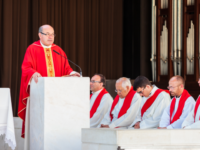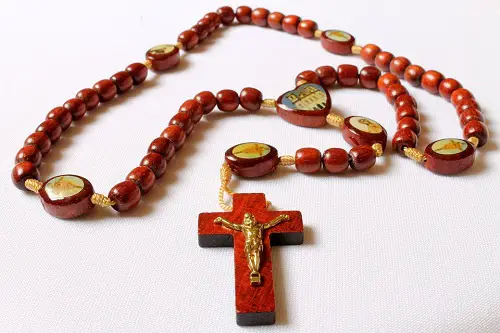
In the intricate tapestry of religious hierarchies, bishops and priests emerge as pivotal figures, entrusted with sacred responsibilities within various faith traditions. While their roles may differ in certain aspects, a closer examination reveals a profound web of similarities that bind these ecclesiastical leaders. This article explores the shared characteristics, functions, and historical roots that unite bishops and priests.

Historical Context:
To comprehend the similarities between bishops and priests, it is imperative to delve into their historical origins. Both titles trace their roots to the early Christian Church, where a hierarchical structure gradually evolved. In the apostolic era, the terms ‘bishop’ and ‘presbyter’ (from which ‘priest’ is derived) were used interchangeably. Over time, however, a distinction emerged, crystallizing their distinct roles while preserving an underlying connection.
Similarities in Ecclesiastical Authority:
One of the primary similarities between bishops and priests lies in their ecclesiastical authority. Both positions involve a divine calling and the recognition of spiritual leadership within a religious community. The authority vested in bishops and priests emanates from a theological understanding of their roles as intermediaries between the divine and the congregants.
Sacramental Functions:
Bishops and priests share a fundamental role in administering sacraments, essential rituals within many Christian traditions. Both are empowered to perform baptisms, celebrate the Eucharist, and officiate at weddings and funerals. This sacramental commonality underscores their shared commitment to guiding believers through key milestones in their spiritual journeys.
Pastoral Responsibilities:
The pastoral dimension of their roles is another striking similarity between bishops and priests. Both are tasked with shepherding their flocks, offering guidance, support, and spiritual counsel. Whether overseeing a parish or a diocese, bishops and priests play a crucial role in nurturing the faith of their congregants and fostering a sense of community.
Teaching and Preaching:
Both bishops and priests are called to be teachers and preachers of religious doctrine. They interpret sacred texts, deliver sermons, and provide theological insights to aid the spiritual growth of their communities. The shared commitment to education underscores their joint responsibility to impart religious knowledge and foster a deeper understanding of faith.
Hierarchical Structure:
Within the organizational structure of many Christian denominations, bishops and priests operate within a hierarchical framework. Bishops often hold a higher rank, overseeing multiple congregations or dioceses, while priests typically serve at the parish level. This hierarchical arrangement reflects a broader pattern found in various religious traditions, reinforcing the interconnectedness of these roles.
Ordination and Rituals:
The process of ordination is a common thread binding bishops and priests. Both undergo a sacred consecration, often marked by rituals and ceremonies specific to their respective denominations. The laying on of hands, prayers of consecration, and the symbolic passing of authority signify the solemn commitment to their roles and responsibilities.
Conclusion:
In conclusion, while bishops and priests may occupy distinct niches within the ecclesiastical landscape, their similarities are profound and underscore the unity within diversity in Christian traditions. From historical roots to shared sacramental functions, pastoral responsibilities, and hierarchical structures, the parallels between these religious leaders reveal a collective commitment to guiding believers on their spiritual journeys. As custodians of faith, both bishops and priests stand as pillars of religious communities, embodying a shared devotion to the divine and the service of humanity.
Comparison chart highlighting the key similarities between bishops and priests:
| Aspect | Bishops | Priests |
| Historical Origins | Common origins; used interchangeably in the early Christian Church. Distinction emerged over time. | Evolved from the same historical roots, originating in the early Christian Church. |
| Ecclesiastical Authority | Hold significant ecclesiastical authority, often overseeing multiple parishes or dioceses. | Exercise authority at the parish level, serving a specific congregation or community. |
| Sacramental Functions | Administer sacraments, including baptisms, Eucharist, weddings, and funerals. | Responsible for performing the same sacraments, reflecting shared religious practices. |
| Pastoral Responsibilities | Shepherd and guide the spiritual journey of congregants, offering support and counsel. | Share in the pastoral dimension, nurturing faith, and fostering a sense of community. |
| Teaching and Preaching | Act as teachers and preachers, interpreting sacred texts and providing theological insights. | Share the responsibility of educating and enlightening congregants through preaching and teaching. |
| Hierarchical Structure | Often occupy higher positions within the ecclesiastical hierarchy, overseeing multiple communities or dioceses. | Typically operate within a parish-level structure, under the oversight of bishops or higher authorities. |
| Ordination and Rituals | Undergo sacred ordination rituals, including the laying on of hands and prayers of consecration. | Experience similar ordination processes, symbolizing their commitment to their roles and responsibilities. |
Here’s a set of frequently asked questions (FAQ) about the similarities between bishops and priests:
What are the main similarities between bishops and priests?
Bishops and priests share commonalities in their historical origins, ecclesiastical authority, sacramental functions, pastoral responsibilities, teaching and preaching roles, hierarchical structures, and the process of ordination.
Do bishops and priests come from the same historical roots?
Yes, bishops and priests share common historical origins, initially using the terms interchangeably in the early Christian Church. Over time, a distinction emerged, crystallizing their distinct roles while preserving an underlying connection.
How does ecclesiastical authority differ between bishops and priests?
Bishops typically hold higher ecclesiastical authority, often overseeing multiple parishes or dioceses. Priests, on the other hand, exercise authority at the parish level, serving a specific congregation or community.
What sacramental functions do bishops and priests have in common?
Both bishops and priests are empowered to administer sacraments, including baptisms, the Eucharist, weddings, and funerals. This shared responsibility reflects common religious practices.
How do bishops and priests contribute to pastoral care?
Bishops and priests both engage in pastoral responsibilities, shepherding and guiding the spiritual journey of congregants. They offer support, counsel, and foster a sense of community within their respective roles.
What is the role of bishops and priests in teaching and preaching?
Bishops and priests both act as teachers and preachers, interpreting sacred texts, delivering sermons, and providing theological insights. They share the responsibility of educating and enlightening congregants.
How does the hierarchical structure differ between bishops and priests?
Bishops often occupy higher positions within the ecclesiastical hierarchy, overseeing multiple communities or dioceses. Priests typically operate at the parish level, under the oversight of bishops or higher authorities.
What is the significance of the ordination process for bishops and priests?
Both bishops and priests undergo a sacred ordination process marked by rituals such as the laying on of hands and prayers of consecration. These rituals symbolize their commitment to their roles and responsibilities.
Are there variations in the roles of bishops and priests across different Christian denominations?
Yes, the roles of bishops and priests can vary across Christian denominations, reflecting the diverse organizational structures and traditions within each faith community.
How do bishops and priests contribute to the unity of religious communities?
Bishops and priests, through their shared commitment to faith, sacraments, pastoral care, and teaching, contribute to the unity and cohesion of religious communities by guiding believers on their spiritual journeys.













Leave a Reply